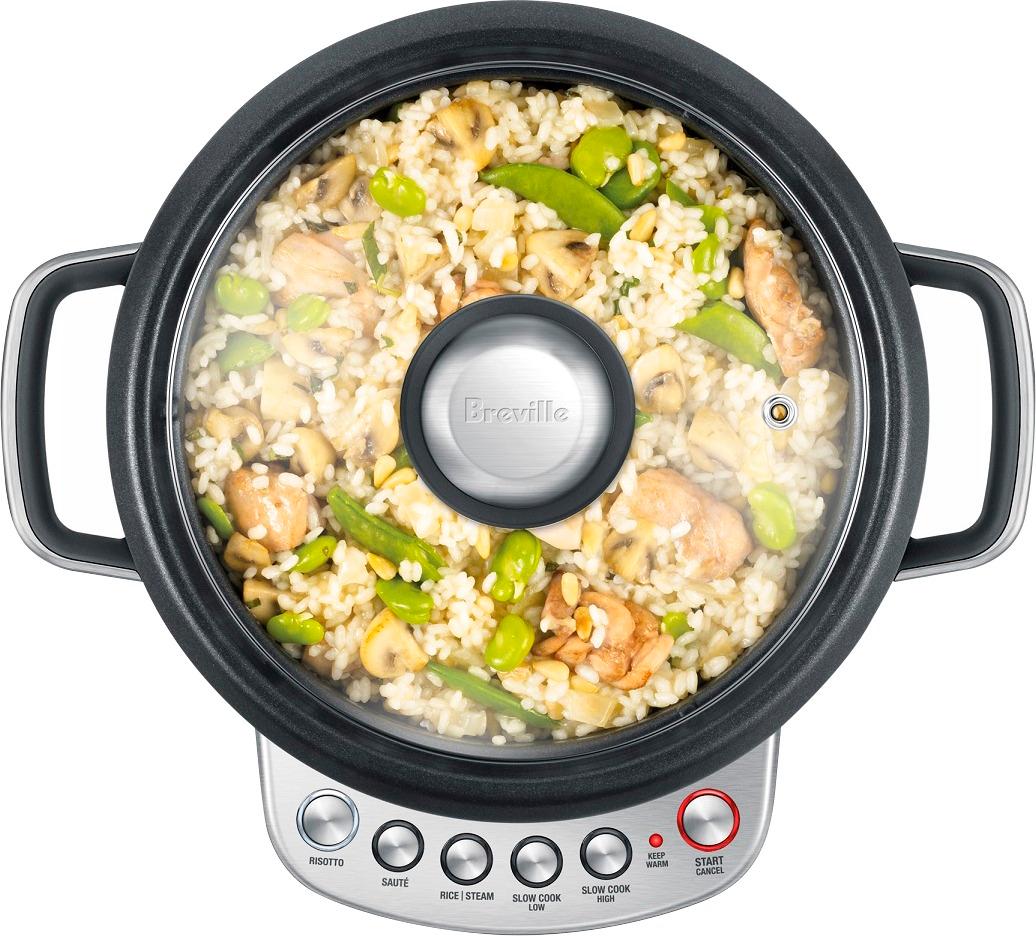
The first step is becoming familiar with your particular Breville model. While they operate similarly overall, different models have variations in capacity, settings, and features. Read the instruction manual to understand the specific functions and programs of your rice cooker.
Key components generally include a cooking bowl, steaming tray or basket, condensation collector, and control panel. The non-stick bowl is where rice is cooked, while vegetables or proteins can be steamed above in the included tray or basket.
Rinsing rice before cooking is an essential step. This removes excess starch from the surface of the grains which can make rice sticky.
Place the rice in a fine mesh strainer and rinse under cool water, swirling the rice with your hand. Continue rinsing until the water runs clear. This takes away some of the starch without sacrificing the rice’s nutrients.

Measuring the correct amount of water is crucial for perfectly cooked rice. As a general rule, use 1 cup of water for every 1 cup of rice. For aromatic varieties like basmati or jasmine, you can use a bit less water such as 3⁄4 cup per 1 cup of rice.
Don’t overload the cooking bowl with too much rice. Refer to your model’s capacity limits. Too much rice prevents even cooking and absorption.
Now you’re ready to add the rinsed rice and measured water to the non-stick bowl. Gently spread out the rice so it’s evenly distributed across the bottom before pouring in the water.
Close the lid securely. On the control panel, select the appropriate cooking program for the type of rice you are making. White and brown rice programs are common, along with settings for oatmeal, stew, and more. The rice cooker will automatically switch to the warm function once rice is finished.

An important step after rice is cooked is allowing it to steam undisturbed for 10-15 minutes. This lets the rice grains finish cooking completely and absorb any excess moisture evenly.
Don’t open the lid too soon or you may end up with undercooked, wet rice. When rice is ready, carefully open the lid tilting it away to allow steam to escape.
Use a soft spatula or rice paddle to gently fold and fluff the finished rice. This prevents any sticking or mushiness. Allow rice to rest off heat for 5 minutes before serving.
When serving, use the provided serving spatula to scoop rice from the cooking bowl. Don’t scrape the bottom too much to avoid picking up any stray undercooked grains.

A handy benefit of many Breville rice cooker models is the ability to steam foods while rice cooks below. To use the steaming function, place vegetables, fish, or other items in the steaming tray or basket.
Add about 1/2 cup of water to the bowl below. The steaming water doesn’t need to touch the rice itself. Close the lid and press the steam program if your model has one. Otherwise, run the regular rice cooking cycle.
Check food for doneness after the minimum steaming time, taking care not to open the lid too soon. Continue steaming if needed. Steaming provides healthy cooking without oil or fat.
With the proper techniques, your Breville rice cooker will deliver tender rice and perfectly steamed food every time. Refer to this guide to get started and enjoy the convenience of one-pot cooking.
How do I know when the rice is done cooking?
The rice cooker will switch itself to the warm setting when rice is finished cooking. You can also open the lid carefully and check rice for doneness. Properly cooked rice will be tender but not mushy.
Can I cook other grains like quinoa in my Breville rice cooker?
Many Breville models include settings for cooking other grains like oats, barley, and quinoa. Refer to your instruction manual for guidance on cooking times and water amounts for different grains.
My rice is sticking to the bottom of the bowl. What am I doing wrong?
Scraping or digging into the rice can cause sticking, especially with the non-stick surface. Use a soft spatula and gentle folding motion when fluffing rice after cooking. Make sure not to overload the bowl with too much rice as well.
Breville rice cookers and steamers take the hassle out of preparing perfect rice and complementary dishes. With the proper ratios, settings, and timing, you can make tender grains and steamed vegetables or proteins easily. Use this guide to get the most out of your Breville for quick one-pot meals.
